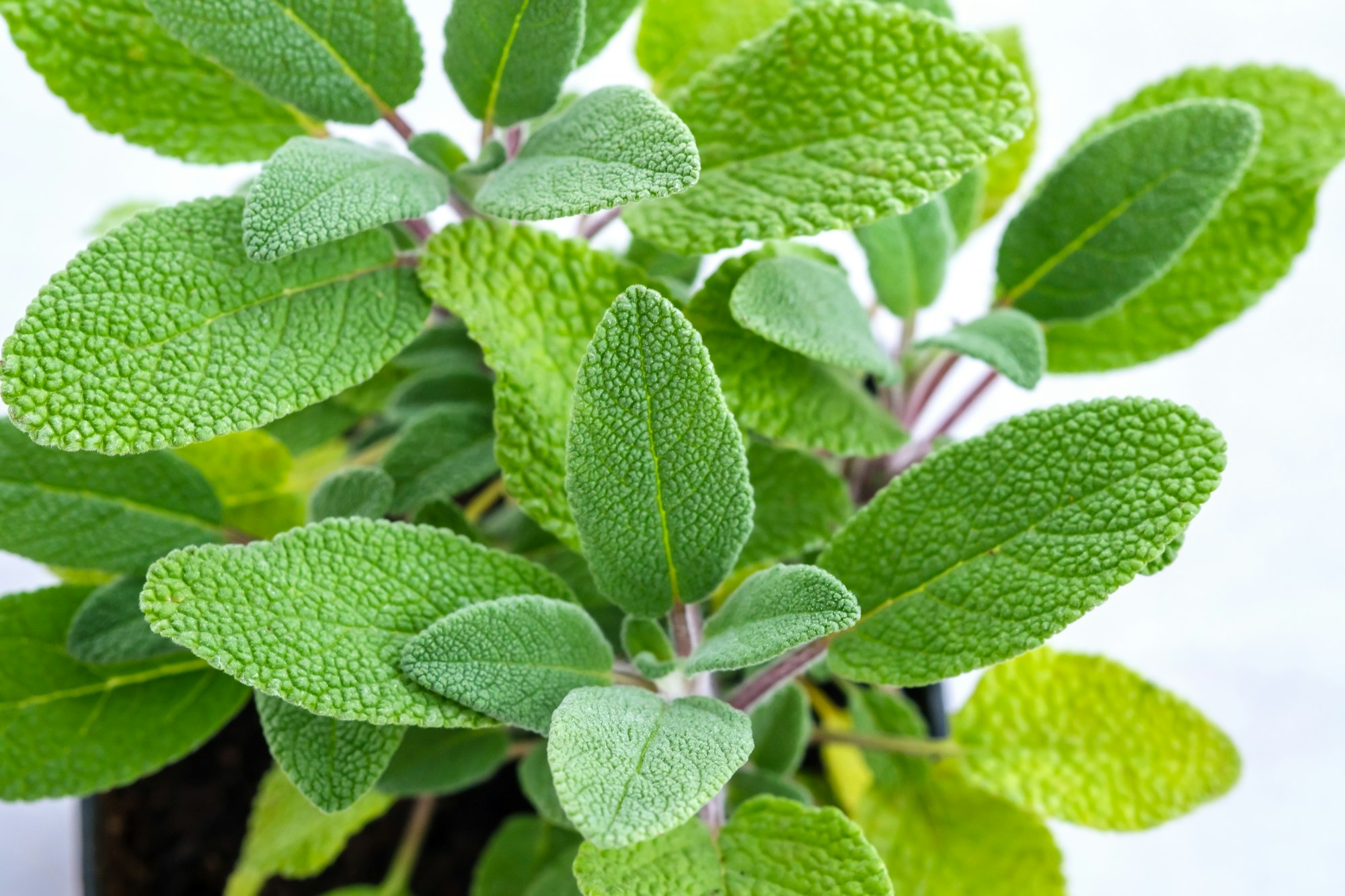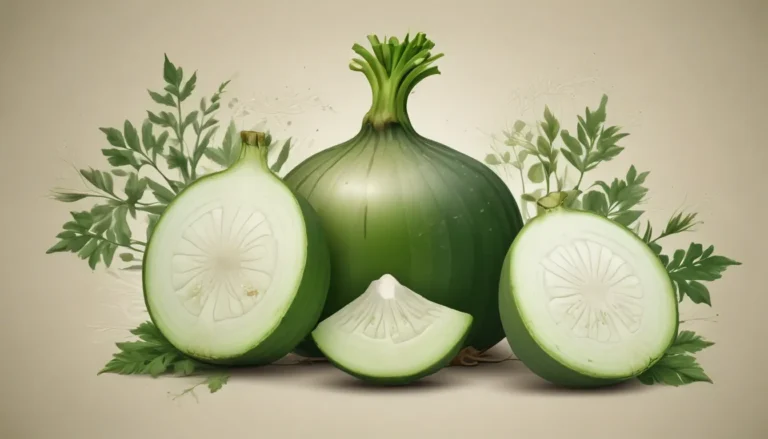The pictures in our articles might not always show exactly what the text is talking about. We use these images to make the article more interesting and eye-catching. They are there to add to the text, but not to replace it or show every detail.
Sage, a humble herb with a rich history, has captivated culinary enthusiasts and health-conscious individuals alike. From its aromatic leaves to its medicinal properties, sage offers a world of benefits and intrigue. Let's explore 20 interesting facts about sage that showcase its versatility and significance in our lives.
The Basics of Sage
- Family Ties: Sage belongs to the Lamiaceae family, sharing kinship with other popular herbs like basil, thyme, and rosemary.
- Etymology: The word "sage" originates from the Latin word "salvare," meaning "to heal," reflecting its historical use in traditional medicine.
- Native Roots: Sage is native to the Mediterranean region, thriving in dry, sunny climates in countries like Greece, Italy, and Turkey.
- Velvety Texture: The silver-grey leaves of the sage plant have a distinctive velvety texture due to fine hairs covering their surface.
Historical and Cultural Significance
- Sacred Herb: In ancient times, sage was considered a sacred herb with mystical properties, often used in rituals and ceremonies.
- Symbol of Wisdom: Sage is frequently used as a symbol of wisdom and longevity in folklore and mythology.
- Medicinal History: For centuries, sage has been used as a natural remedy for various ailments, including aiding digestion and improving memory.
Culinary Uses and Flavor Profile

- Distinctive Flavor: Sage has a strong and aromatic flavor described as earthy, peppery, and slightly bitter, making it a popular seasoning in savory dishes.
- Holiday Favorite: It is commonly used in traditional Thanksgiving recipes, pairing well with roasted turkey and other festive dishes.
- Versatile Ingredient: Sage can be used in a variety of dishes, including roasted meats, soups, sauces, and even desserts, often complementing other herbs like thyme and rosemary.
Health Benefits and Medicinal Properties
- Antimicrobial Power: Sage has antimicrobial properties and is used in natural remedies to fight off bacteria and prevent infections.
- Memory Booster: Research has linked sage to improved memory and cognitive function, enhancing concentration and mental acuity.
- Antioxidant Properties: Sage contains antioxidants that protect the body against oxidative stress and cellular damage.
- Vitamin K Source: It is a rich source of vitamin K, crucial for blood clotting and bone health.
- Natural Food Preservative: Sage has been used as a natural food preservative, inhibiting the growth of bacteria and extending the shelf life of food.
Practical Applications and Uses
- Soothing Tea: Sage leaves can be brewed into a soothing tea known for its calming effects and stress-relieving properties.
- Aromatherapy: Sage oil is commonly used in aromatherapy to promote relaxation, reduce anxiety, and improve overall well-being.
- Topical Application: Sage leaves can be used topically to soothe insect bites and skin irritations, providing relief and promoting healing.
- Easy to Grow: Sage is a low-maintenance plant that is drought-tolerant and can thrive in various soil types, making it easy to grow in home gardens.
- Precautions: Pregnant women should avoid consuming excessive amounts of sage as it may stimulate the uterus, and individuals with allergies to mint family plants should exercise caution.
The Versatility of Sage in Daily Life
Sage's versatility extends beyond its culinary and medicinal uses. Its aromatic properties make it an excellent natural air freshener, and its leaves can be used to create decorative wreaths or dried flower arrangements. Some people even use sage in smudging rituals, believing it can cleanse spaces of negative energy.
In the kitchen, sage's robust flavor profile allows it to shine in a variety of dishes. Try adding fresh sage leaves to a butter sauce for pasta, or infuse olive oil with sage for a flavorful drizzle over roasted vegetables. Sage can also add depth to savory baked goods like herb bread or cheese scones.
Growing Sage at Home
For those interested in cultivating their own sage, it's a relatively easy herb to grow. Here are some tips for successful sage gardening:
- Choose a sunny spot with well-draining soil
- Plant sage in spring after the last frost
- Water sparingly, as sage prefers drier conditions
- Prune regularly to encourage bushy growth
- Harvest leaves as needed, but avoid taking more than a third of the plant at once
Growing your own sage not only ensures a fresh supply for cooking and medicinal uses but also adds a beautiful, fragrant element to your garden or windowsill.
Sage in Modern Research
While sage has been used traditionally for centuries, modern science is now catching up to confirm many of its purported benefits. Recent studies have shown promising results in sage's potential to:
- Improve cognitive function in patients with Alzheimer's disease
- Lower blood sugar levels in people with diabetes
- Reduce menopausal symptoms like hot flashes
- Support oral health by fighting bacteria that cause dental plaque
As research continues, we may discover even more benefits of this ancient herb, further cementing its place in both traditional and modern medicine.
Incorporating Sage into Your Lifestyle
Whether you're a culinary enthusiast, a health-conscious individual, or simply curious about natural remedies, there are numerous ways to incorporate sage into your daily routine:
- Add fresh sage leaves to your favorite recipes
- Brew a cup of sage tea for relaxation
- Use sage essential oil in a diffuser for aromatherapy
- Create a sage-infused vinegar for salad dressings
- Make a natural sage mouthwash for oral hygiene
By exploring these various applications, you can experience the multifaceted benefits of sage firsthand.
Conclusion
From its humble beginnings in the Mediterranean to its worldwide popularity today, sage has proven itself to be a truly remarkable herb. Its diverse range of uses - from culinary applications to medicinal properties - makes it a valuable addition to any kitchen or home remedy kit. As we continue to uncover more about sage's potential, it's clear that this ancient herb will remain relevant in our modern world for years to come.
Whether you're seasoning a holiday turkey, brewing a soothing cup of tea, or growing it in your garden, sage offers a connection to nature and centuries of herbal wisdom. So why not explore the world of sage for yourself? You might just discover your new favorite herb!
FAQs
Is sage safe to consume?
Yes, sage is generally safe to consume in moderation. However, it's advisable to consult with a healthcare professional if you have underlying health conditions or are taking medications.
How can sage be used in cooking?
Sage can be used in a variety of dishes, including roasted meats, soups, sauces, and even desserts. It pairs well with other herbs like thyme and rosemary.
Does sage have medicinal benefits?
Yes, sage has antioxidant and anti-inflammatory effects. It may help with digestive issues, sore throat, and menopausal symptoms.
Can sage be grown at home?
Absolutely! Sage can be grown at home in well-drained soil with plenty of sunlight, making it a low-maintenance herb for gardens or pots.
Are there any precautions necessary when using sage?
Pregnant women should avoid excessive sage consumption, and individuals with allergies to mint family plants should use caution.
Can sage be used in alternative medicine practices?
Yes, sage is often used in alternative medicine practices like aromatherapy and herbal remedies for its relaxing properties.






